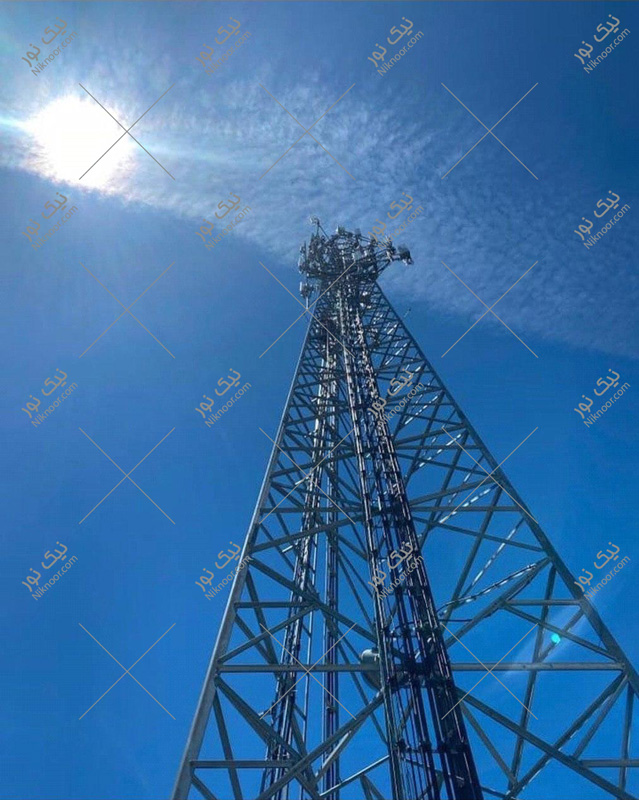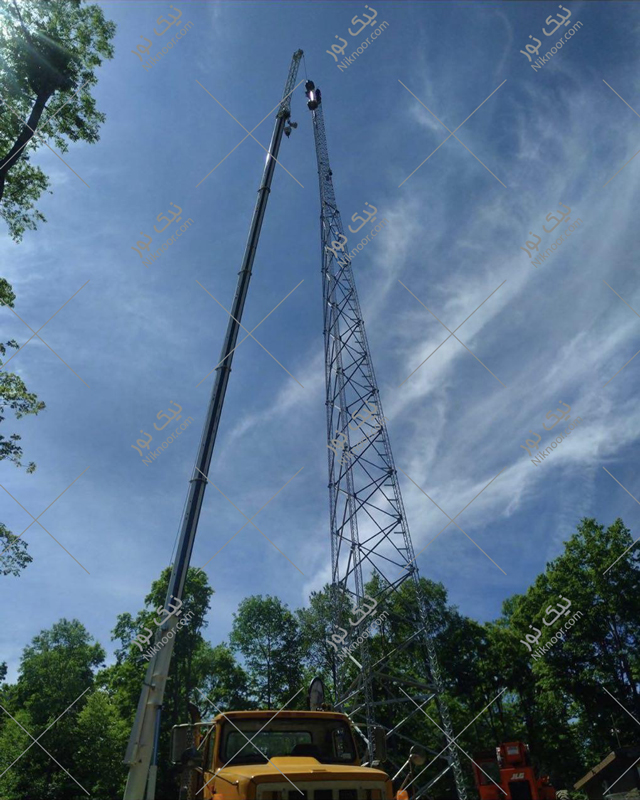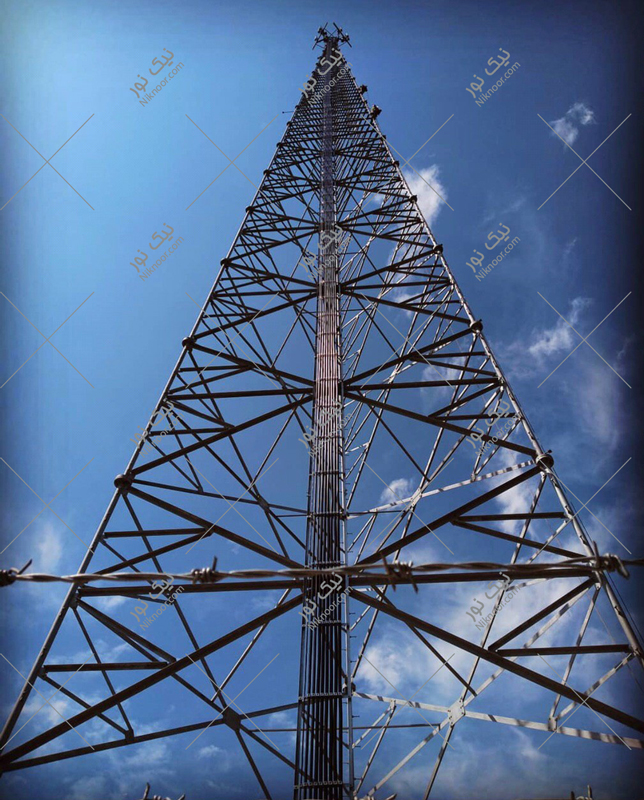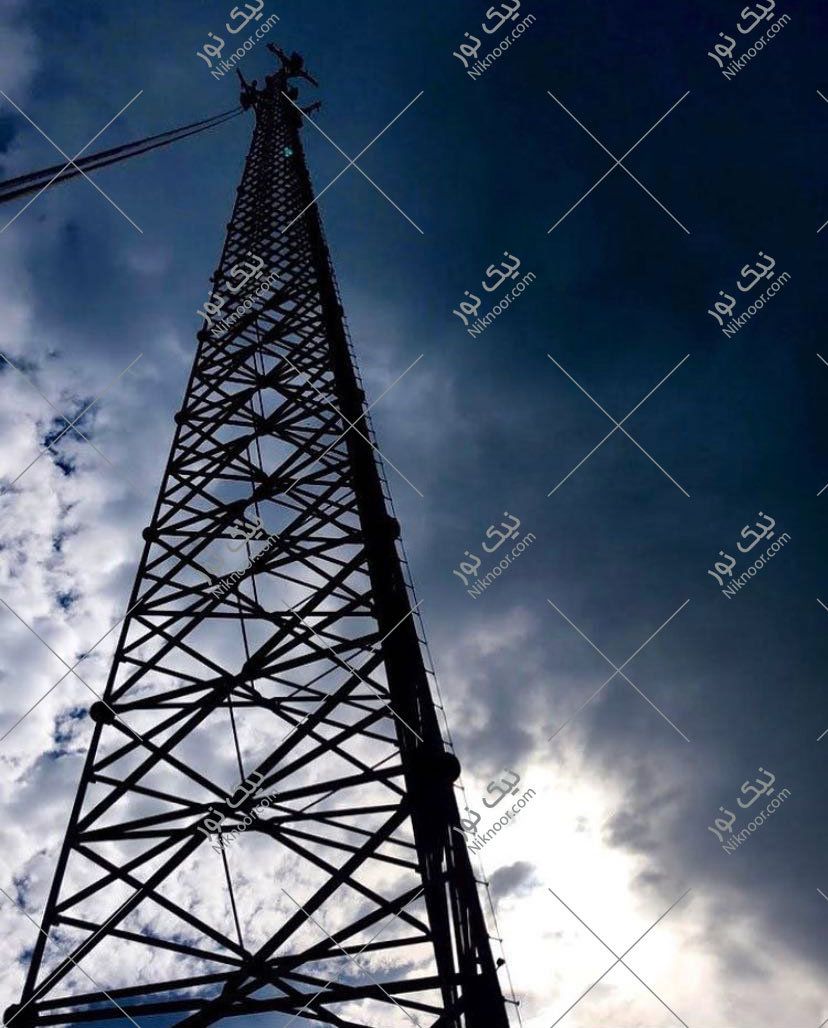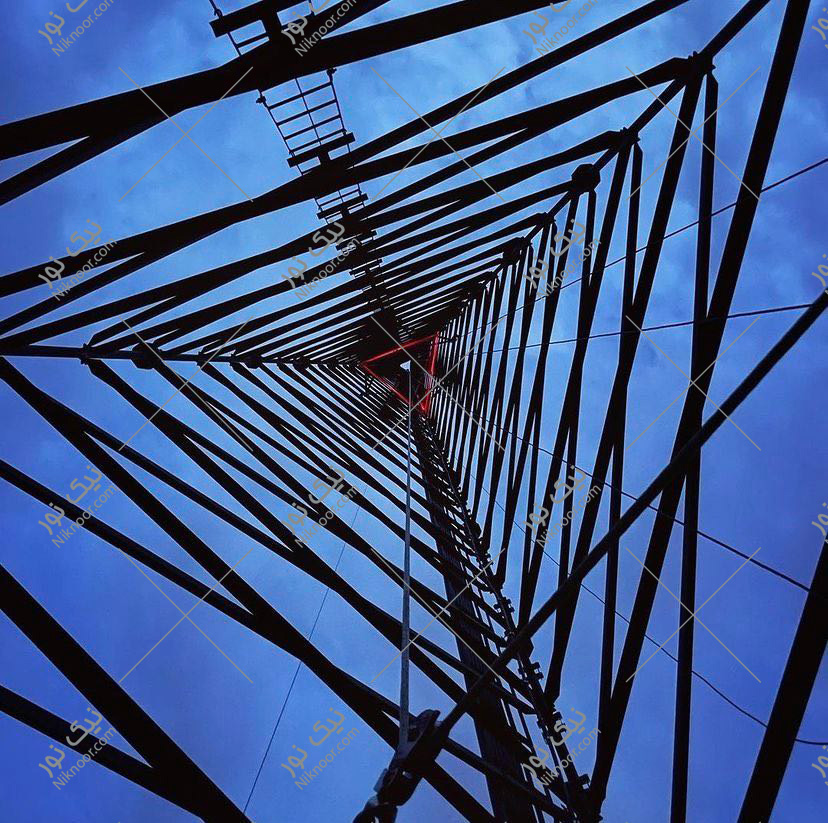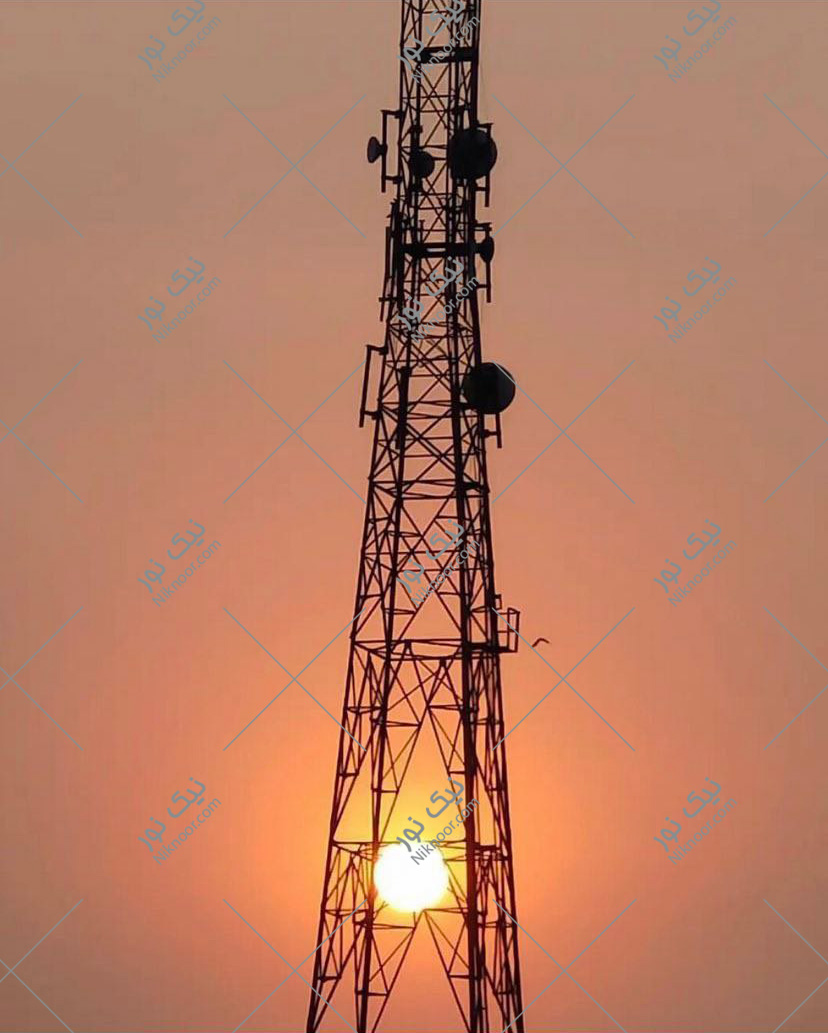Self-Supporting Towers
Self-supporting towers are metal structures with three or four legs, designed as lattice frameworks where components such as pipes and angles are connected to form a truss-like structure. These towers are called “self-supporting” because they rise with a specific inclination relying on their main legs for stability and maintain their balance without guy wires or additional supporting elements.
The components of a self-supporting tower are typically made of angle bars, pipes, and channels, which are assembled using bolts, nuts, or welding. Before constructing a self-supporting tower, factors such as wind conditions in the area, visibility requirements, and the type and number of antennas to be installed must be considered during the design phase.
In the following sections, various types of self-supporting towers will be discussed.
Three-Legged Self-Supporting Tower
This type of tower is constructed with three main legs, which are typically made from either pipes or angle bars. The advantages of this design over the four-legged type include occupying less space and being more cost-effective. Additionally, this structure is primarily used for mounting telecommunications and military antennas.
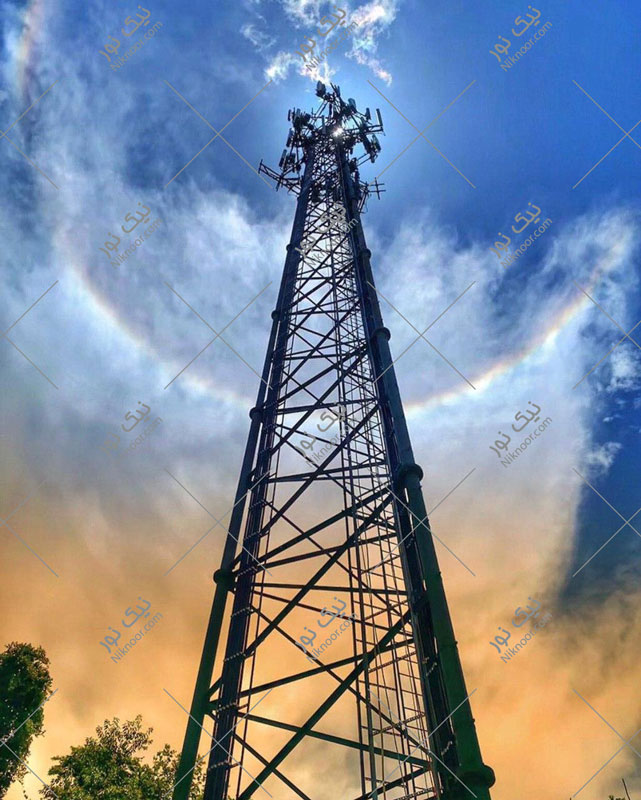
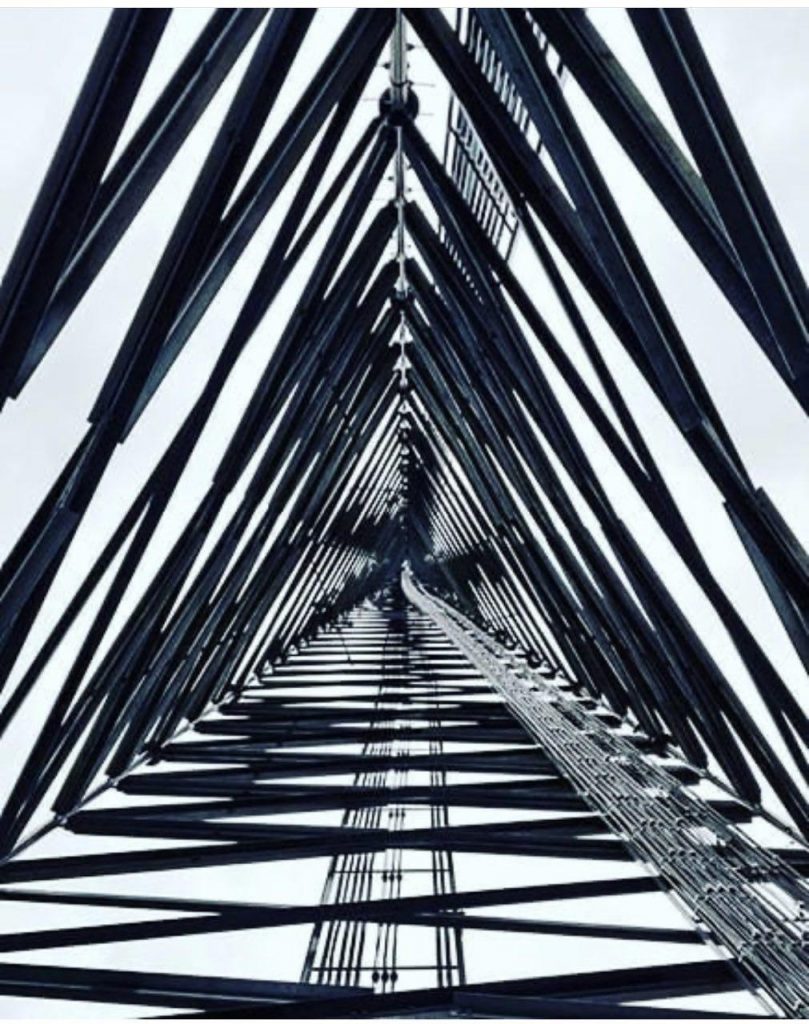
Four-Legged Self-Supporting Tower
This type of self-supporting tower is constructed with four legs, usually made from angle bars. Compared to the three-legged design, its advantages include greater load capacity, better stability, and suitability for taller structures. Four-legged self-supporting towers are predominantly used in industries such as oil, petrochemicals, gas, and infrastructure communications.
Share this page


